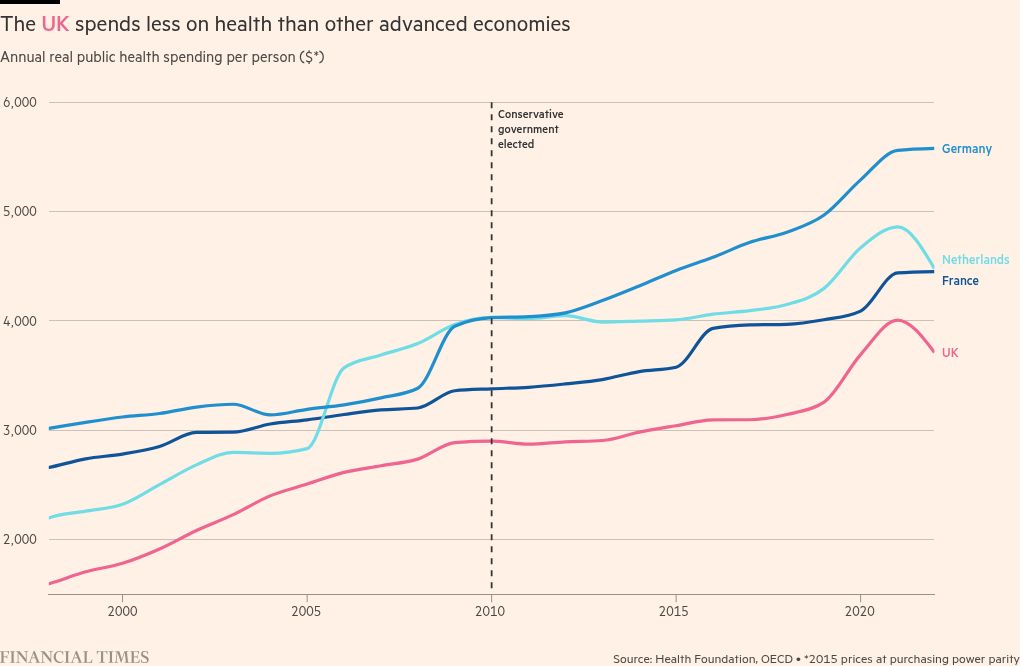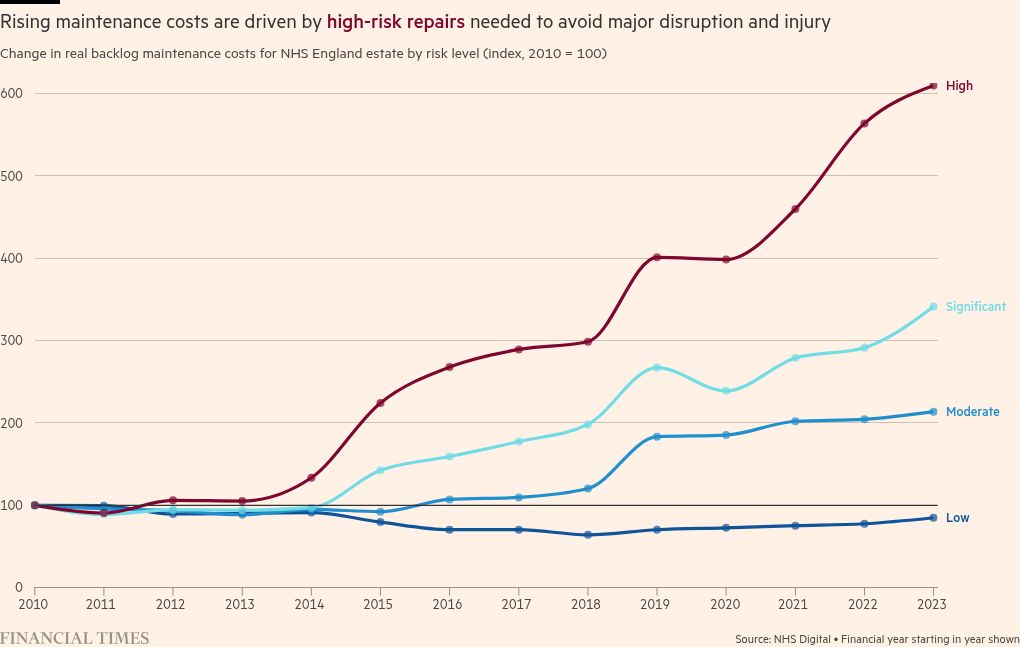
Launching a “national conversation” about the future of England’s NHS on Monday, the UK health secretary Wes Streeting admitted it was in the midst of “the worst crisis in its history”.
While the government is calling on health staff and the general public to submit ideas for a new “10-year health plan” to rebuild the service, there is a growing acceptance that as well as new ideas, the NHS needs more money.
As health leaders press for a substantial funding injection in the Budget on October 30, the latest data underlines the scale of the strains on the taxpayer-funded system.
Day-to-day spending
Just three months into the financial year, the NHS budget overspend stood at £387mn, according to minutes of an NHS England board meeting earlier this month.
Planned total health spending is increasing to £192bn during 2024-25 but inflation means that, on current plans, this will equate to an increase of just 0.6 per cent in real terms compared with 2023-24, according to the Health Foundation, a research organisation.
Hannah Rose Douglas, assistant director of the foundation’s REAL Centre, said the NHS was “very much in a position where it’s trying to run to stand still, because we’ve got a growing population, increasing need, and we seem to be going backwards”.

Health officials said they felt confident the NHS would receive a real-terms increase of around 3-4 per cent for 2025-26. However, they questioned the baseline from which that would be calculated, including whether any rise would take account of deals agreed with junior doctors this year, which are estimated to cost around 2 per cent of the health budget. “A 4 per cent increase has potentially already been chopped in half,” noted one of the people.
Government officials insisted estimates of 3-4 per cent were “wrong” but declined to provide an alternative figure.
Infrastructure spending
The bill to repair NHS buildings and facilities has rocketed to almost £14bn, including £2.74bn worth of “high-risk” repairs, according to data released last week.
Responding to the data, Saffron Cordery, deputy chief executive of NHS Providers, which represents senior managers at health organisations across England, warned that vital bits of the NHS were “literally falling apart after years of under-investment”, threatening the safety of patients and staff. The UK has for years lagged comparable nations in the number of beds and diagnostic equipment such as scanners per head of population.
Siva Anandaciva, chief policy analyst at the King’s Fund, a think-tank, noted that outdated buildings and equipment were “stopping them [staff] from doing good work, stopping them from being productive”.
Matthew Taylor, chief executive of the NHS Confederation, which represents health managers in England, Wales and Northern Ireland, said ministers were likely to need several options to raise capital, including shared investment models to secure funding on a project-by-project basis from private capital, in addition to government borrowing.

Workforce
Under a long-term staffing strategy for the NHS published last year by the previous Conservative government, training places for doctors, nurses and midwives are set to double, or come close to doubling, by 2031, while training places for GPs are due to rise by 50 per cent.
But it will take time for new recruits to become fully fledged professionals, and data from NHS England shows around one in 13 posts for registered nurses, midwives and health visitors is currently vacant. Anandaciva at the King’s Fund said it was “a live question” as to how much funding was “on the table to give the NHS the staff it needs”.
Politicians and health leaders alike are focusing not simply on increasing numbers, however, but on generating greater productivity from the existing workforce.
Last year, the Institute for Fiscal Studies think-tank found the NHS was treating more patients than in 2022, with volumes over the first nine months of 2023 close to 2019 levels.
But IFS economists Max Warner and Ben Zaranko noted that this “still begs the question: if the NHS has many more staff than pre-pandemic, and more funding, why is it only managing to treat the same number of patients?”
Out-of-hospital care
One of Streeting’s guiding principles for the 10-year NHS plan, expected next year, is that more people should be treated in the community, through illness prevention or providing speedier diagnoses, to relieve pressure on hospitals. It is a shift successive ministers have extolled since 2006.
However, spending on hospital services has increased as a proportion of total NHS expenditure in recent years, while the proportion spent on primary care and community health services has fallen.
Four organisations — the Health Foundation, Demos, the Institute for Government and Cipfa, the public finance and accountancy body — on Monday wrote to chancellor Rachel Reeves, calling for spending on prevention to be a separate category within departmental expenditure limits, as with capital expenditure, to ensure it was not “squeezed out” to meet the service’s short-term needs.
Health and Treasury officials distanced themselves from the idea but its proponents plan to continue to press for it ahead of next year’s spending review.
Data visualisation by Amy Borrett
Additional reporting by Anna Gross